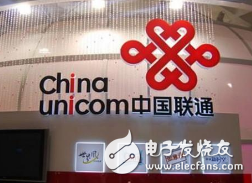China Unicom has recently been in the spotlight due to its mixed-ownership reform, with many netizens questioning whether these changes will truly revitalize the company. Although the stock is currently suspended, competition in the market remains intense. According to China Unicom's announcement, its pilot program for mixed ownership reform has been approved by the National Development and Reform Commission. The company plans to introduce strategic investors through a non-public share issuance. But can this reform really rescue China Unicom? That’s what many are asking.
China Unicom has officially received approval from the China Securities Regulatory Commission (CSRC) for its non-public issuance of A-shares as part of the mixed-ownership reform. However, the company has not yet received the official written approval document and will announce it separately once it is received.
The non-public offering plan was disclosed on August 21 and approved by the shareholders' meeting on September 20. According to the plan, China Unicom aims to raise up to 61.725 billion yuan through the non-public issuance, while the transfer of old shares by Unicom Group involves an additional 12.975 billion yuan.

At the end of September, during a press conference, Chairman Wang Xiaochu mentioned that all funds from the strategic investors involved in the mixed-ownership reform should be in place by the end of the year.
It is understood that the 61.725 billion yuan raised through this non-public offering will be allocated toward 4G, 5G, and innovative business initiatives. According to the documents, the total investment for the 4G capacity enhancement project is 55.09 billion yuan, while the 5G network technology verification and trial commercial construction project totals 27.1 billion yuan. The innovative business construction project requires 3.213 billion yuan, making the total estimated investment across these three areas 85.403 billion yuan. Of this, the funds raised will cover 39.816 billion yuan for 4G, 19.587 billion yuan for 5G, and 2.322 billion yuan for innovation.
Wang Xiaochu also emphasized that the transition from 2G to 4G and then to 5G is not the same. Unlike 4G replacing 3G, 4G and 5G will coexist for some time. Therefore, 5G investment requires experimentation and patience. It is expected that 5G will reach commercial maturity by 2020. Currently, China Unicom is closely monitoring developments without large-scale investments. He noted that 5G communication needs a mature period of two to three years, so expanding the 4G network remains crucial for generating revenue.
Looking at China Unicom’s financial reports, it’s clear that 4G continues to drive revenue growth. In the first half of 2017, the number of 4G subscribers increased by 34.26 million, reaching a total of 138 million. The proportion of 4G users among mobile subscribers rose by 23.7 percentage points year-on-year to 51.5%. Additionally, the average revenue per user (ARPU) for 4G users reached 66.5 yuan, significantly higher than the overall mobile user ARPU of 48 yuan.
Mobile Internet data traffic grew by 325.7% year-on-year, with mobile Internet revenue reaching 42.9 billion yuan. Large data packages, mainly driven by 4G, contributed significantly to this growth.
From a network coverage perspective, according to Guoxin Securities data, China Unicom still lags behind its competitors in terms of 4G base station distribution. China Mobile leads with 48% of 4G base stations, followed by China Telecom at 29%, and China Unicom at 23%.
With the rapid development of mobile internet and video services, the number and proportion of 4G users continue to grow, and mobile data consumption is rising sharply. For China Unicom, continuous expansion and enhancement of its 4G network cannot be delayed.
All Accessories Of Laser Level
Green Laser Protective Glasses,Laser Protection Glasses,Laser Protection Eyewear,Laser protection
Guangdong Tumtec Communication Technology Co., Ltd , https://www.gdtumtec.com